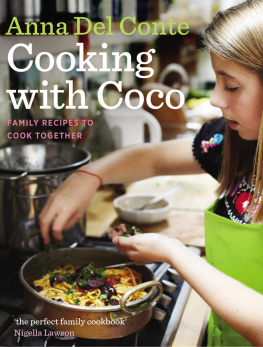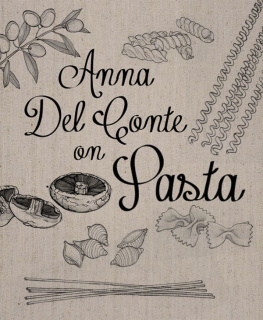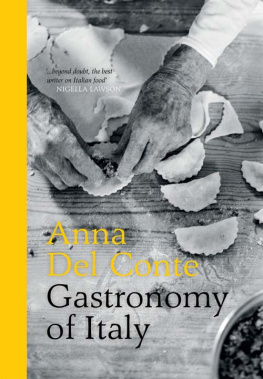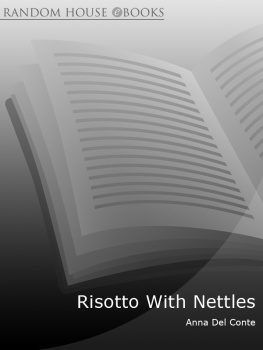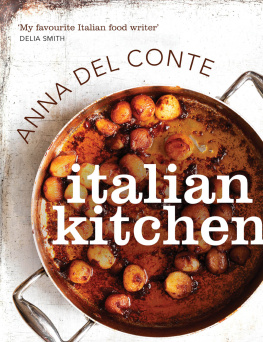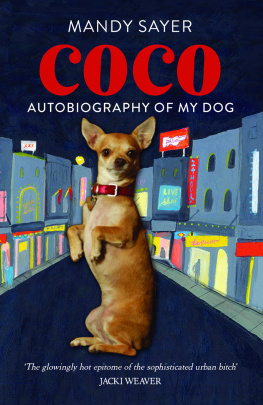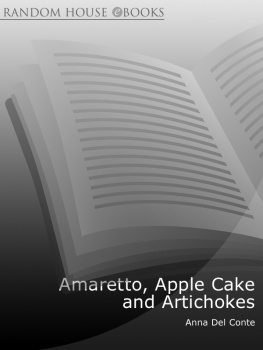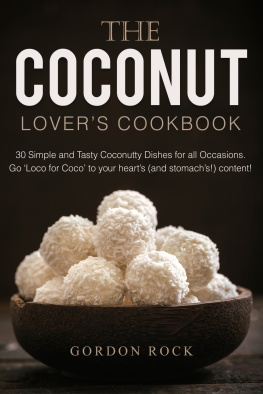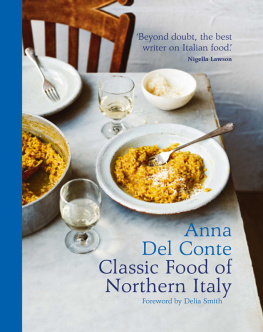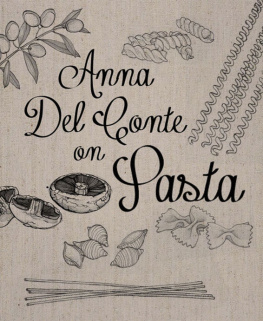Contents
About the Book
Coco is Anna Del Contes 12-year-old granddaughter and her tireless helper in the kitchen. From a very early age, Coco showed an interest in food and cooking Anna taught her to smell and taste food, and soon enough Coco was able to start helping, progressing from decorating cakes to making pasta to conjuring up her favourite tagines.
Taking us from the simple dishes of the early stages, through to more complex cooking for older children by way of meatballs, Cocos first biscuits, lamb with couscous and sweet ricotta pancakes and illustrated with beautiful photographs, Anna Del Conte brings us the best of all the recipes they have cooked together. In a relaxed, informal style, she shows how to teach children the importance of seasonal food, how to introduce new skills and techniques, and how to choose the best ingredients. But Cooking with Coco is also an inspirational reminder of how much fun families can have together in the kitchen.
Written by an internationally renowned cook, food writer and grandmother, for all the eager and sometimes mischievous faces around her table, Cooking with Coco is a book for anyone who wants to introduce children to simple, healthy and delicious cooking and the joy and satisfaction of making it themselves.
About the Author
The best writer on Italian food in the UK and perhaps the world, Anna Del Conte has written 12 books including the acclaimed Portrait of Pasta, Gastronomy of Italy and Amaretto, Apple Cake and Artichokes. She won the Duchessa Maria Luigia di Parma award for Gastronomy of Italy, and was shortlisted for the Andre Simon award with Entertaining AllItaliana. The Classic Food of Northern Italy won awards from the Guild of Food Writers and the Accademia Italiana della Cucina. She has contributed to Sainsburys magazine and received the Glenfiddich award for her journalism. Her memoir, Risotto with Nettles, was published by Chatto in 2009. This year Anna was awarded the honour of Ufficiale dellOrdine al Merito della Repubblicao Italiana in recognition of the work she does for Italy and Italian food in this country. She lives in Dorset.
By Anna Del Conte
Portrait of Pasta
Good Housekeeping Italian Cookery
Pasta Perfect
Gastronomy of Italy
Secrets from an Italian Kitchen
Entertaining AllItaliana
The Classic Food of Northern Italy
Amaretto, Apple Cake and Artichokes
Risotto with Nettles
For Nell, Johnny, Coco, Kate and Viktor
Introduction
Coco is my 12-year-old granddaughter and my tireless helper in the kitchen. Her ambition in life is to open a restaurant that she will call il ristorante della Nonna , where she will recreate all the dishes we have cooked together.
Coco liked being in the kitchen from a very early age. I used to sit her down, with a spoon and a piece of bread, or a sprig of parsley and a clove of garlic in front of her, and she would try to copy whatever I was doing. Like any other child, she enjoyed it because she liked being with me and being talked to. And of course I liked it too a lovely cheerful face smiling at me; far easier for me than playing and also far more productive, since I had to be in the kitchen in any case to prepare a meal. I taught Coco to smell food and I gave her titbits to taste during the different stages of cooking. Soon enough she was able to do the simplest jobs, like arranging decorations on a cake. Her favourite job was weighing out ingredients, which we did with old-fashioned weighing scales. I would put the flour or the sugar in the bowl and she would put the weights on the flat plate she put the copper weights on or took them off or changed them; and so she also learnt some arithmetic along the way.
When Coco first began to help me she loved to shower grated Parmesan onto a mound of risotto. She would pick up the cheese with her fingers and then try to sprinkle it over; it usually finished up all together in a lump. But she soon enlarged her repertoire and now, after several years by my side in the kitchen, she can make many dishes all on her own such as custard, biscuits, mousses and some sauces. At the moment she is passionate about Moroccan cooking, thanks to her mothers tantalising descriptions of the delicious food she ate while she was on holiday there. So Coco now forgoes meat pies in favour of tagines, she experiments with kofta and pilaf and couscous, and leaves risotto and pasta aside. Of course we dont just make foreign food; I teach her my Italian dishes but I also want her to learn the English dishes that are part of the culture of her country.
Coco loves shopping, by which I dont just mean buying toys and tops, but also tomatoes and lamb. I have shown her what to look for when we buy fennel bulbs (the bottom and the outside should be creamy and have no brown spots); French beans (they should snap when you bend them and not just floppily bow); beef (it should have a yellowish fat, not spanking white); prosciutto (with a lovely strip of fat around it); Parmesan (its colour and texture), and so on and so forth. She listens and absorbs.
We also talk about the seasons and I have tried to teach her how important they are to good cooking. Unfortunately, in Britain seasons hardly matter any more. You can buy almost anything all year round. Children nowadays, alas, do not have the thrill of eating the first cherries in June and making a wish, as we used to when I was a child in Milan, or the first peaches in July and the first mandarins in November. But I tell my grandchildren that a tomato salad in the middle of January, for instance, is not only tasteless, but also is not in harmony with the weather. A rich risotto of mushrooms is far more enjoyable in the autumn, while one made with fresh vegetables can only be eaten in the spring. Who wants a beef stew or baked lasagne in July? Dishes, like ingredients, have seasons.
My mother used to say that a good dish begins in the shop and I will add that a good chef begins in the shop too. During our time together in the kitchen, I know that Coco has learnt the basics of cooking. She has also learnt the importance of the ingredients you buy, the respect you must have for each of them, and the ability to taste and criticise and improve.
Tasting is a very important part of cooking, yet it is so often overlooked. But how do you teach a child the criteria for judging a dish? How indeed? Well, through experience and discussing with your young helper the merits or otherwise of what you are making. Encourage your Coco to make comments, negative as well as positive, and to try to express the reasons behind those comments. Your taste might be slightly different, but you will soon find out that if she judges that a little more chilli is needed or an extra pinch of salt, you will agree. Just as a child learns how to appreciate paintings by being taken to galleries, or to understand and love music by listening, the same applies with food: frequent exposure to good food and systematic analysis will teach so much.
There is no main course as such in Italian cooking. There are usually two principal courses, which are never brought to the table at the same time. After a pasta, a risotto or a soup, your taste buds get ready for the next dish, which is often a vegetable dish or a fresh salad. I have passed on to my grandchildren the Italian habit of having more than one course in a meal. I agree that one course can be as big as three smaller courses, but it is boring to eat the same thing until you are full. Far more satisfying and civilised to have a change. So, in this book, you might find that the quantities are a bit on the mean side, if you want to cook only one dish as a main course. In that case, just increase them, remembering that when you increase the quantity of the main ingredient you dont have to increase the amount of butter or oil in the same proportions. For instance, if the recipe calls for 400g pasta and 6 tablespoons oil but you want to cook 600g pasta, you only need 7 tablespoons oil, not 8. You have also to be more parsimonious with spices and all other strong flavourings.

